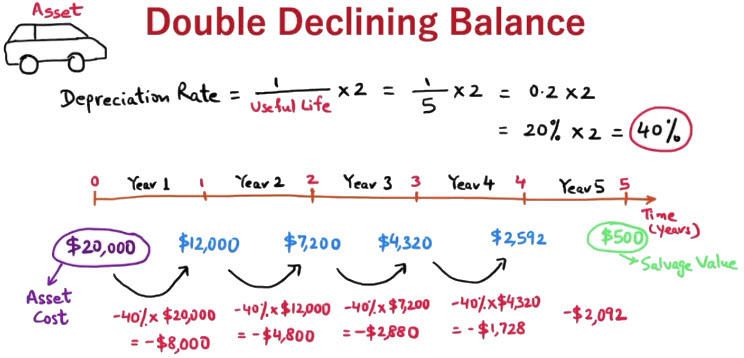“What if” is one of those phrases that business owners need to think about virtually all the time. What if we made an acquisition? What if we lose that account? What if we get hit with higher taxes? What if we buy new equipment? The list goes on…
Pro forma financial statements are essentially “what-if” generators, giving you the ability to play through different hypothetical scenarios and explore their potential impact on your business. Most business owners can relate with recent events and the need to understand what will happen if they lose revenue and how long they can float on their cash reserves. This is where pro forma statements come in to help in planning for the future.
What is a pro forma financial statement?
Pro Forma is a method of calculating financial results using certain projections or presumptions. While these statements are useful in making business decisions they are not computed using standard generally accepted accounting principles (GAAP) and usually leave out one-time expenses that are not part of normal operations. A company can exclude anything it believes obscures the accuracy of its financials. Businesses use these statements for decision-making in planning and control, and for external reporting to owners, investors, and creditors.
Pro forma statements can be used as the basis of comparison and analysis to provide management, investors, and creditors with a feel for a business’s financial structure under various conditions. Both the American Institute of Certified Public Accountants (AICPA) and the Securities and Exchange Commission (SEC) require standard formats for businesses in constructing and presenting pro forma statements; SEC rules require that to avoid misrepresentation, companies issuing pro forma statements must also show the most comparable statement on the company’s finances, prepared using Generally Accepted Accounting Principles (GAAP), alongside the pro forma statement.
How can a pro forma help with planning?
As part of the planning process, pro forma statements can help minimize the risks associated with starting and running a new business. These statements are an essential part of a business plan. They can also help convince lenders and investors to provide financing for a start-up firm. But, pro forma statements must be based upon objective and reliable information in order to create an accurate projection of a small business’s profits and financial needs for its first year and beyond. After preparing initial pro forma statements and getting the business off the ground, the small business owner should update the projections monthly and annually. A strategic business owner can use a pro forma in many ways including: long-term financial planning, cash flow predictions, planning to staff, planning operating expenses, revenue forecasting, and so much more.
Pro Forma statements aren’t only used for business they can also be useful in your personal life as well. Whether you are a company or a high net-worth individual, you should consider obtaining pro-forma financial statements prior to big financial decisions. These can include:
When you’re refinancing debt and want to know how refinance options will affect the short term
One-time events and their effects on your budget, which can include anything from land purchases to equipment repairs
Company mergers or purchases
Building or vehicle leases under the new accounting standards
What is the difference between a pro forma and a budget?
Financial budgets, financial forecasts, financial projections and pro forma financial statements are terms that are often used interchangeably, but they are not the same thing. The confusion happens because they all follow a similar format using the same statements, show numbers over a specific period of time, and there are significant assumptions and accounting policies used in each. The difference, however, lies in the purpose and assumptions behind them.
Here is a simple way to remember what each statement is used for: Budget is where you want the business to go, Forecast is where the business is going, Projection is a hypothetical “what would happen if we did this”, and Pro Forma is historical financial statements adjusted for the effects of a future transaction.
What are the three major categories of pro forma financial statements?
- Pro Forma Income Statement – A pro forma income statement shows a company’s adjusted income if certain financial inputs were removed. In other words, it’s a way to show what the income of the business would be if some costs were excluded. Typically excluded costs are one-time, non-recurring expenses that impact the financial performance.
- Pro Forma Balance Sheet – A pro forma balance sheet is a tabulation of future projections and can help your business manage your assets today for better results in the future. It can assure that there are no surprises in the future when it comes to paying your bills, getting returns on investments, and keeping your inventories in stock.
- Pro Forma Cash Flow Statement – A pro forma cash flow statement is the estimated amount of cash inflows and outflows expected in future periods. This information will be useful to develop the annual budget or forecasting for a specific period. This statement is arguably the most essential because if there is insufficient cash in the business it will be hard to support management’s plans.
What are the types of pro forma financial statements?
- Full-year pro forma projection – This pro forma projection includes a business’ year-to-date results as well as forecasted income and expenses for the rest of the year to provide a full year view. This projection is useful to investors and lenders, who want reassurance that your business is slated for profitability at the end of the year.
- Financing or investment pro forma projection – If you plan to seek funding from investors or take out a business loan, you may be asked for revenue projections. This statement specifically deals with how your company’s results will change if you receive an infusion of capital. You may want to create financial projections for different investment amounts to cover your bases.
- Historical with acquisition pro forma projection – If you plan to acquire another business, this is the right pro forma statement for you. It combines your business’ accounting results with that of the business you want to acquire, subtracting acquisition costs and synergies, and therefore shows a rough sketch of how the acquisition will blend into your balance sheet. This is specifically useful for investors or lenders to understand what the profitability will look like once the acquisition is completed.
- Risk analysis pro forma projection – Whenever making a major financial decision, you need to know best- and worst-case scenarios. That’s where pro forma risk analysis comes in handy. By creating pro forma reports for a variety of scenarios, you can see how a decision will have an impact on your bottom line and make your decisions accordingly.
Four steps to create a pro forma income statement:
- Estimate revenue projections for your business. Make sure to use realistic assumptions based on your market to create accurate projections. If your business is pre-revenue it is a good idea to do some market research and talk with experts to determine what your revenue expectations should be, as well as cash flow for your first year.
- Estimate your total expenses and liabilities. It’s important to put a lot of thought into each expense and during this process it is an opportunity to evaluate if every cost is necessary and what you can cut to increase your profitability.
- Estimate your cash flow. This portion of your pro forma will project your net income, dividends, interest, etc. It’s important to understand the timing of your revenue and expenses to make sure you’re managing your company’s cash flow appropriately.
- Putting it all together. For year one, it will be broken down into monthly increments while the following years (two through five) will be statements yearly. As time progresses, you’ll update your pro forma monthly and adjust for any new assumptions.
It is important to remember that the pro forma is all based on estimates and your estimates should change as your business grows and your assumptions change. It is critical that you continually update the projections in your pro forma is ensure ongoing accuracy.
Final Notes
The thought of tackling this yourself can feel overwhelming but there are professionals like Avenues Financial that can help you create a budget, pro forma, projection, or forecast. It’s important to remember most bookkeepers and accountants are not skilled or trained in strategic financial modeling. At Avenues Financial, we specialize in this type of financial modeling and we will save you time and money.




